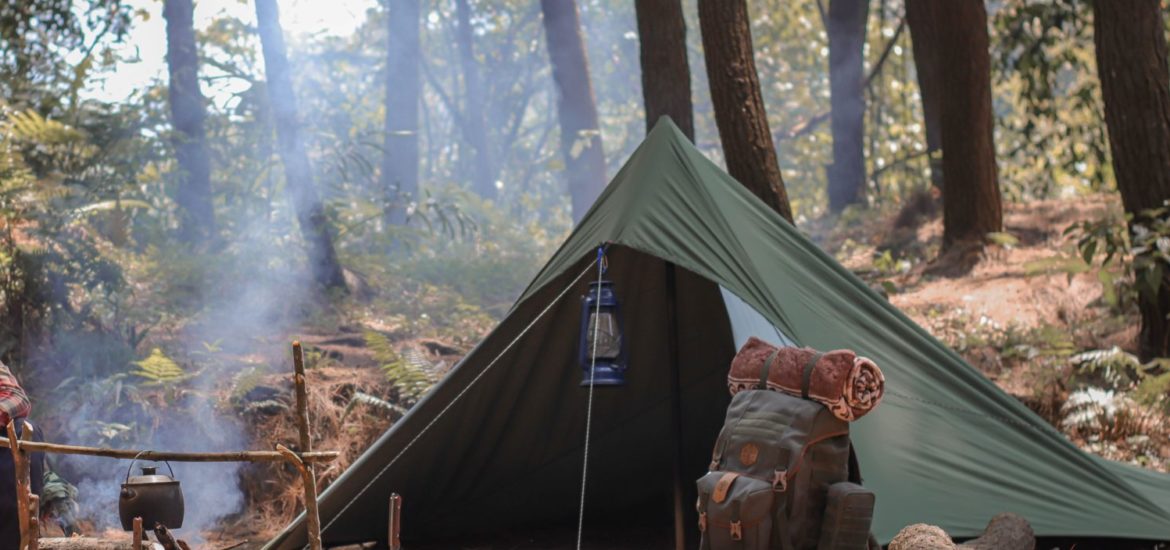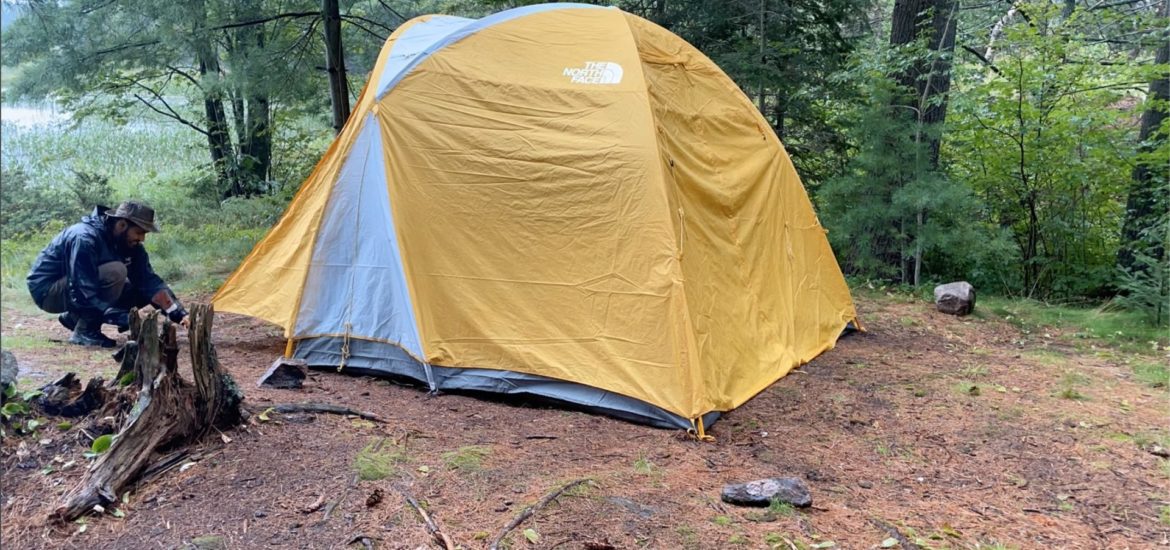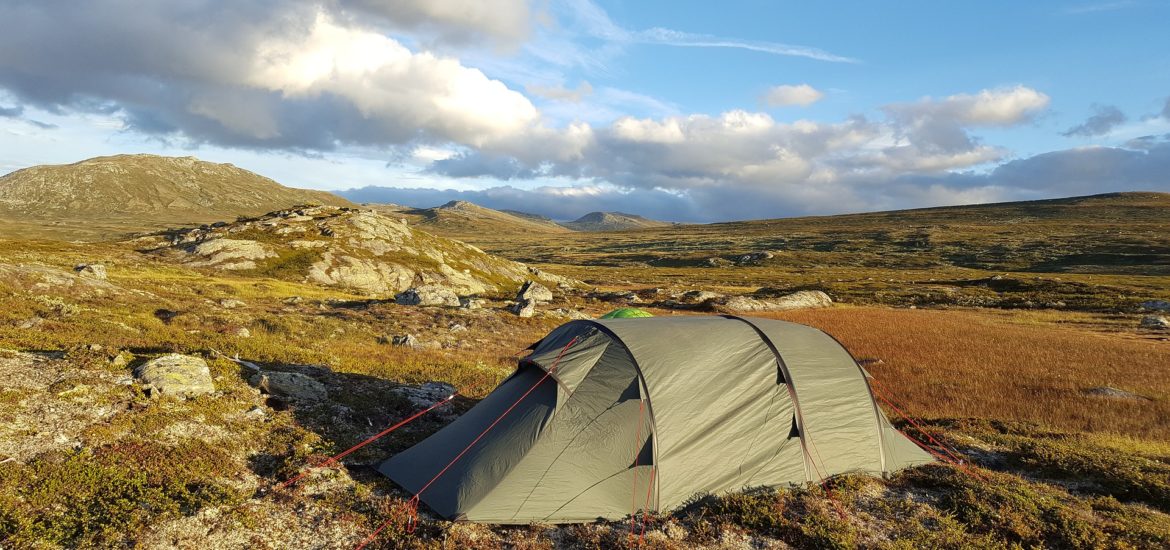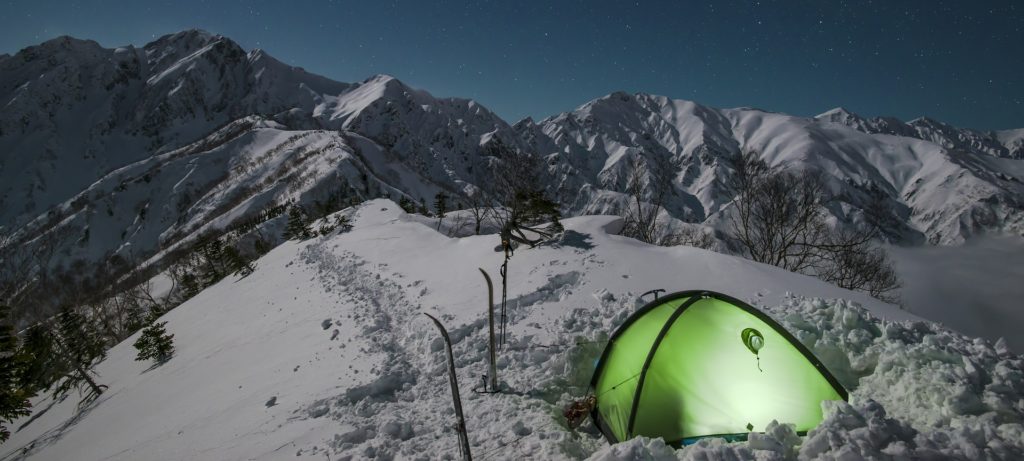Whether you are hoping to buy your first camping tent or looking to replace old faithful, you’re probably looking into getting a “freestanding” or “non-freestanding” tent. All camping tents are classified into these two types.
But, what exactly is a freestanding camping tent? And, how is a freestanding tent better for camping than a non-freestanding tent?
Well, let’s get into it!
Article Contents:
What Is a Freestanding Camping Tent?
The differentiating quality of free standing tents is how they are designed to be set up and their support mechanism.
A freestanding camping tent is designed to be erected with dedicated tent poles, which allow it to remain erected without the need for ground stakes or the use of guy lines.
Let’s compare freestanding tents with their counterpart; non-freestanding tents. So, here’s a detailed explanation to understand them both better.

Freestanding Tent Design Details
A freestanding camping tent comes with dedicated poles, and generally require less effort from your end for set up.
As the name implies, a freestanding tent remains erect without the use of ground stakes pegged into the ground because the tent poles keep the tent body taught under tension.
A noteworthy aspect of a freestanding tent is that it can be moved around your campsite without hassle since they don’t collapse when lifted and repositioned.
How Does It Work?
Freestanding tents function with the support of a dedicated pole structure.
- There are pole clips or sleeves attached to the tent body that hold the poles in place.
After the poles are attached and then anchored to the base, the tent retains its shape due to the outward pressure caused by the bending tent poles.
Usually, the poles crisscross each other at the top of the tent, forming an X shape. When the tent is taken down, the poles come apart and fold down for storage.
Tent Features
Most freestanding camping tents are a double-wall construction with a rainfly cover attached separately. But, there are also single-wall, waterproof models in the market today for improved convenience.
They come in innovative designs and shapes including dome, geodesic or semi-geodesic, pop-up, and cabin-style tents.
Pro-tip: Check out my article on The Difference Between Single-Wall and Double-Wall Tents.

Non-Freestanding Tent Design Details
A non-freestanding tent needs to be tied to supporting structures or staked down when pitching. Once pitched, you can’t move it around. It will collapse without being held up by stakes and guy lines.
How Does It Work?
Ground stakes, guy lines, and a few poles all need to be used to pitch a non-freestanding tent. If it’s your first time, it will take some practice to get the hang of it.
- A single pole is erected at each end of the tent body; however, more can be used if necessary depending on the tent type.
For example, a ridge tent has two vertical poles at each end which support a horizontal pole in the centre. The tent body is draped overtop of the poles resembling an A-frame.
To keep the shape and tent erect, the base of the tent is staked into the ground, and ropes are used to guy out the top of the vertical poles to the ground.
If it’s rocky or the ground is too hard, you have to rely on trees, heavy rocks, or other structures to help anchor the tent in place.
Tent Features
Non-freestanding tents are usually single-walled with no rainfly. But, there are some tent models available as double-wall. They come in single-pole or multiple-pole designs, the latter offering more space.
Ultralight non-freestanding tents often utilize trekking poles instead of dedicated tent poles.
A-frame/ridge tents, tunnel tents, and teepees/ pyramid tents all fall under the category of non-freestanding.
What Are the Benefits of a Freestanding Camping Tent?
There are a few key benefits of pitching and using a freestanding camping tent.

1. Ease of Use
An impressive benefit of a freestanding camping tent is that it’s ultra convenient and easy to pitch. Most likely it can be set up in a few minutes, even by a beginner, without much hassle.
You don’t have to struggle with hammering in ground stakes or erecting poles in windy or rainy conditions. All you need to do is connect the poles to the tent body and voila!
The fact that freestanding camping tents can also be moved to a different place without collapsing is another plus.
2. Flexible Ground Conditions
A freestanding camping tent can be pitched literally anywhere, from soft forest ground to a rocky slab outcropping. You don’t have to worry about planting stakes in rough ground or finding a place with trees to tie guy lines.
It’s also suitable for camping on the beach where staking is not a great option in loose sand. So, it’s a versatile, all-terrain option for backpackers and campers.
But, it’s always recommended to stake the tent into place to improve the stability and wind resistance. A freestanding tent can easily be blown away if not properly secured.
3. Stronger in Windy Conditions
The last thing you want to do on a windy night is wrestling to keep your tent steady! Non-freestanding tents that rely on stakes can easily collapse if they come out of the ground. In windy conditions, these tents are more at risk of collapsing as supporting poles can fall, stakes can come loose, or guy lines can break.
A freestanding tent is more stable due to its pole structure. It can withstand windy conditions better. They are sturdier, providing you with a reliable shelter in unfavourable weather.
4. Larger Interior Space
Compared to tents pitched using a single pole, a freestanding camping tent offers more width and height. The taut space helps you rest comfortably with adequate room to keep your essentials nearby. You can also sit or move around easily.
If you are camping with friends or family, there are plenty of options for big freestanding tents in the market catering to up to 20 people. Most also have storage pockets, lantern hooks, and pouches to help you organize your gear more effectively.
5. Vestibule Area
Usually, freestanding camping tents come with a spacious vestibule area. That means that you don’t have to cram all your camping gear inside or leave them outside at the risk of getting wet or dirty.
The size of the vestibule can vary from tent to tent. A larger vestibule area also means you have better protection against rainwater seeping inside as long as the rainfly covers it. Just keep in mind that not all freestanding tents come with a vestibule area, so check before you buy.

6. No Need for Support Guy Lines
Non-freestanding tents need guy lines to spread the tarp or rainfly for more space and tent stability. But, freestanding tents don’t require them as they are entirely supported by poles and have a rainfly attached to them.
7. Not Dependant on Trekking Poles
Most backpackers and campers use trekking poles to pitch a tent to reduce the weight they carry. But having a freestanding camping tent means you don’t need them unless you rely on them for hikes during the trip itself.
You also don’t have to worry about poles dislodging or falling after they are erected. It is entirely self-supported. Now that’s peace of mind.
Pro-tip: If you’re looking for a solid 3-season tent recommendation, check out my article [Top 3] Camping Tents Perfectly Engineered for Heavy Rain and High Winds.

Why Are Freestanding Camping Tents Popular?
Freestanding tents are extremely popular with campers and outdoor adventurists for a variety of reasons.
Save Time and Effort
A freestanding camping tent is a breeze to set up. It is a go-to choice among both beginner and expert campers. Set up usually requires little to no technical knowledge and can be done very quickly. Pop-up freestanding tents take less than a minute to set up!
If you are camping with a baby or very young children, a freestanding tent is very reliable since you don’t have to spend much time pitching.
Location Versatility
From a terrain perspective, a freestanding camping tent is a super versatile and handy shelter. Like I mentioned earlier, the ground conditions don’t matter. There’s no need for supporting structures.
If you find an interesting campsite, you can settle right there! It’s great for car camping. Even in winter, a double-wall freestanding tent does a great job of minimizing condensation and withstanding snow loads.
Better Ventilation
Due to the double-wall structure, the inner wall of a freestanding camping tent is usually made of breathable mesh material. If there’s no chance of rain, you can detach the rainfly for more ventilation and sleep looking at the stars!
The steeper walls and ample headroom makes your tent roomier, with plenty of space to stretch, move, or sit comfortably. Medium and large-sized freestanding tents usually come with windows and mesh doors for better air circulation which reduce stale air and funk build up.

Are Freestanding Tents Better for Backcountry Camping?
Lots of campers, including myself, prefer to use a freestanding tent while backcountry camping. So, are they actually better for backcountry adventures?
Well, it depends…
Less Hassle Looking for a Suitable Campsite
You can’t expect many amenities when you go on backcountry camping. Terrain features in remote areas may or may not be favourable for pitching a tent.
With a freestanding camping tent, it’s not a problem. It doesn’t necessarily have to be a place surrounded by trees or loose-soil ground. If you find a clearing perfect for stargazing, as long as it’s safe and fits your purpose, you can set up your tent right there!
If you are camping with a baby or very young children, a freestanding tent is very reliable since you don’t have to spend much time pitching.
Tent Poles Can be Heavier to Carry
As you might know already, most backcountry camping spots aren’t easily accessible. You might not be able to drive your vehicle all the way up to the campsite.
In this case, you might have to hike a significant distance. This is where freestanding camping tents fall a bit short.
The double-wall design and the set of dedicated poles can make a freestanding camping tent bulky and heavy to carry. Although the poles come in a collapsible design, they won’t be very short once folded.
On the other hand, a non-freestanding tent is considerably lighter and compact. You can use your trekking poles to pitch the tent, so you don’t have to carry poles separately.
Ultralight Campers Prefer Non-Freestanding Tents
A non-freestanding tent is more portable and easier to carry. It weighs considerably less due to the lack of poles so it’s a good choice for ultralight campers who like their gear as minimal as possible.
Today, you can find lightweight non-freestanding tents under 1 pound! If you are hiking your way to the campsite, this is the best option.
However, you have to compromise on space and comfort. If transportation isn’t an issue where you camp, then a freestanding camping tent is ideal.
This article contains affiliate links, which help support this blog at no cost to you!
